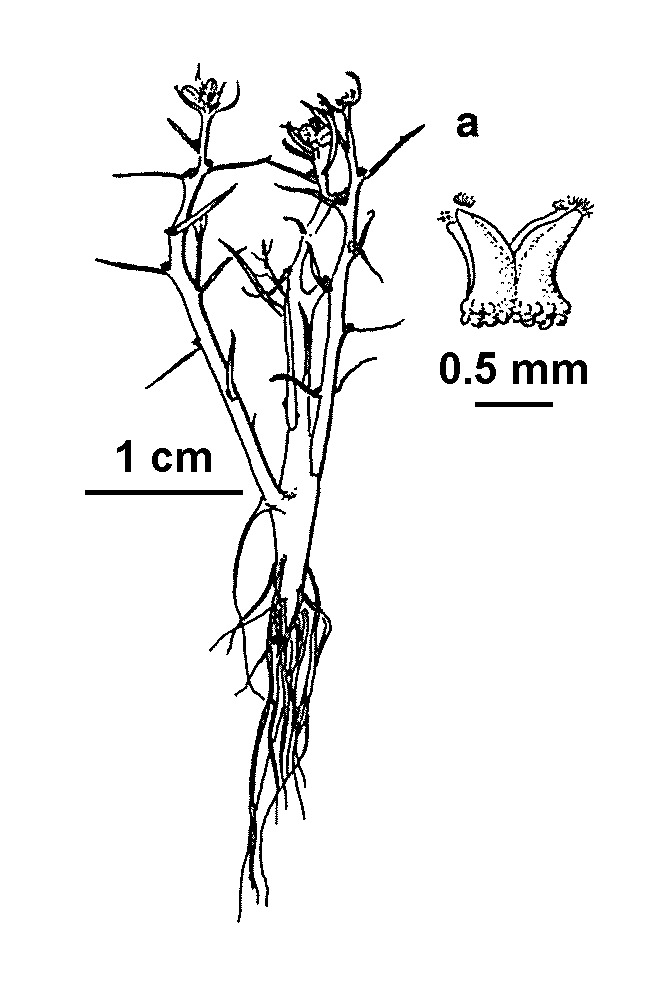Myriophyllum glomeratum
Schindl. Clustered Water-milfoilAnnual marsh herb; stems more or less erect, 3–10 cm tall, mostly c. 0.5 mm diam., rooting only at the base. Leaves alternate, dimorphic; submerged leaves thin, linear, rarely trifid, 5–6 mm long; emergent leaves thick and fleshy, linear, curved, c. 2.5 mm long. Bracteoles linear to narrow-triangular, c. 0.3 mm long, white; flowers 2 or 3 per axil. Male flowers sessile or shortly pedicellate; sepals absent; petals 4, 0.8–1.1 mm long, reddish; stamens 4. Female flowers sessile; sepals and petals absent; ovary 4-celled, styles clavate, becoming reflexed, stigmas white. Fruit cylindric to urceolate, golden or reddish-brown; mericarps cylindric, 0.8–1.2 mm long, swollen and slightly wrinkled at base, smooth and tapering above, with an oblique collar. Flowers Sep.–Jan.
LoM, MuM, Wim, GleP, VVP, VRiv, MuF, Gold, CVU, DunT, NIS. Also SA, NSW, Tas. Scattered widely across northern and western Victoria where it grows in damp or swampy areas and is often inconspicuous amongst other larger swamp plants.
Often grows with the similar Myriophyllum integrifolium, but can be distinguished by its fascicled flowers, 4 stamens and different fruit shape.
Jeanes, J.A. (1996). Haloragaceae. In: Walsh, N.G.; Entwisle, T.J., Flora of Victoria Vol. 3, Dicotyledons Winteraceae to Myrtaceae, pp. 887–908. Inkata Press, Melbourne.
 Spinning
Spinning


